Sclerocactus glaucus: Prickly Colorado native no longer listed as threatened
Many will never notice it, unless they are surprised by its sharp bite or espy its beautiful coloring. It is a small but mighty denizen of the bluffs and plateaus above the Gunnison River, resting along the rolling hills surrounding the base of Grand Mesa and is dotted throughout the North Fruita Desert: Sclerocactus glaucus has been a part of the Colorado landscape for eons.
But for the past 46 years, this elusive little plant has been listed as threatened under the Endangered Species Act.
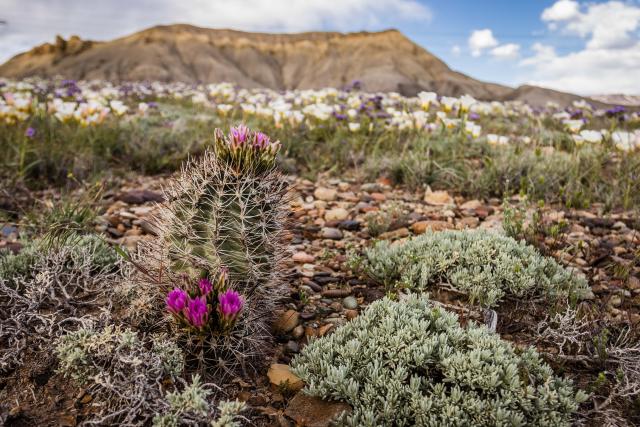
This Colorado hookless cactus typically grows between 1-5 inches tall and blooms in the spring with bright purplish-red flowers. Approximately 72% of its population grows on public lands managed by the Bureau of Land Management. Fears of overcollection of a rare and endemic cactus “by professional and amateur cactus growers” and mining activities in areas with large concentrations of the cactus led to its listing in 1979.
For 11 years after its listing, the species was scrutinized by the BLM, then in 1990 a recovery plan was published to serve as a road map of the tasks required to restore and secure self-sustaining wild populations.
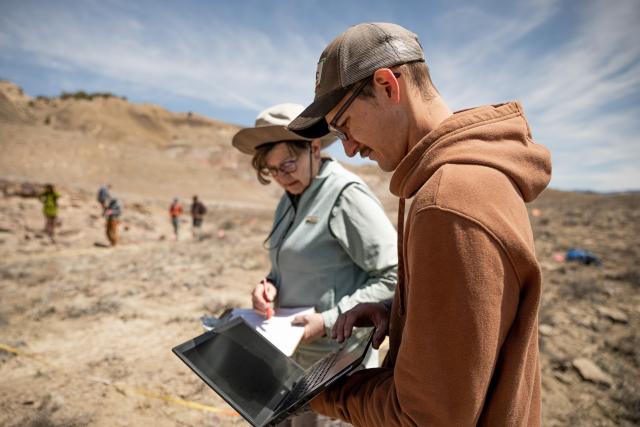
“It is now going to be one of more than 60 species to be delisted,” said Carol Dawson, BLM Colorado state botanist. “Of all insects, birds, mammals, plants and fungi, I believe we are number 65.”
Recovering this ankle biter has been no small feat. The quantitative data needed to establish the baseline of where the species occurs, how many individuals exist, and if populations are increasing, decreasing or stable, usually requires decades of collection through surveys and monitoring.
The cactus had no hope of a quick recovery until Ken Holsinger, an ecologist with the Uncompahgre Field Office, pioneered a new search for the cactus in Colorado. From 2008-2015, a group of BLM researchers surveyed remote parts of the Dominguez-Escalante National Conservation Area, accessible only by rafting the Gunnison River.
Turns out, recovery was within reach.

“When I first came around in 2014 as an intern at the state office, it seemed like there were a lot of things happening with the cactus,” said Phil Krening, Colorado BLM conservation botanist. “I remember approaching Carol and Ken saying, ‘I think we could actually get this done.’ They had already accomplished most of those (recovery criteria) objectives. There were just a handful of things left to do, one of those was get a realistic estimation of the population size for the species.”
On the banks of the Gunnison River, Phil, Carol and Ken were observing more cacti than the report said existed for the entire population, Krening remembered. Over the course of a few days, they put thousands more on the map that has previously been undocumented.
“We were able to get to recovery criteria by filling in information gaps … and some of the initial threats we were thinking would be a big deal we weren’t seeing evidence of,” Krening said. “It did feel like a little bit of a lightbulb moment that recovery was possible when we reached the point of focusing on the last few criteria.”
The team had the where, and were working to understand how many, but they still needed to prove the population met recovery criteria. Ensuring these Colorado hookless cacti made up a genetically diverse population was a concern, as well as researching if hybridization with other common cactus species occurred.
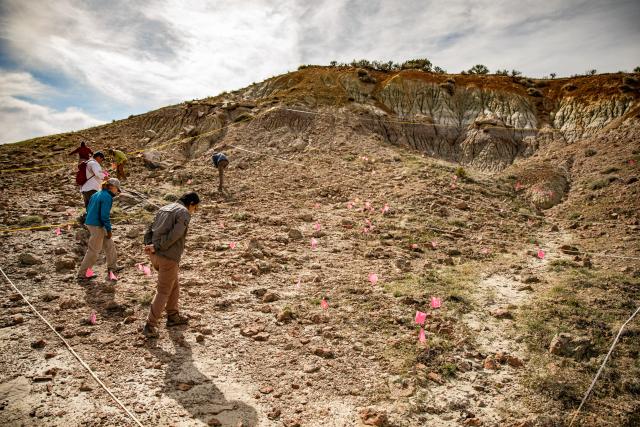
With the help of the University of Northern Colorado, the BLM set out to study the genetic diversity of these cacti. They discovered there are two genetically different species of the Colorado hookless cactus: Sclerocactus glaucus and Sclerocactus dawsoniae.
The latter, published as a new species last year, was named after Dawson for “contributions to the conservation of rare and endangered plant species in Colorado” and enthusiastic support for “the education of many students at colleges and universities throughout Colorado.”
“Proactive conservation of this plant was incredibly important for me when I came to BLM, and I’m so proud of our team being the reason why this is happening,” Dawson said. “The fact we have done enough to recover the species is super important, and it’s really rewarding to suddenly realize ‘We’ve done enough.’”
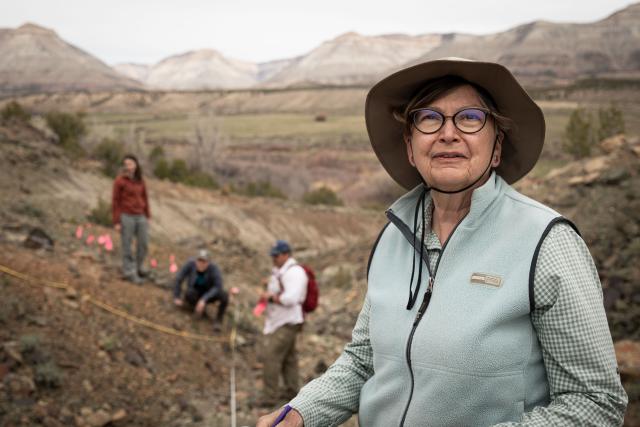
Now, this 46-year effort has come full circle as Sclerocactus glaucus is set to be removed from the Endangered and Threatened Species list by the U.S. Fish and Wildlife Service on May 29, 2025.
“I am so proud of the work accomplished by our team over decades to ensure we are managing lands to conserve this cactus for future generations,” said Doug Vilsack, BLM Colorado director. “The majority of these cacti populations live on BLM Colorado public lands. This delisting shows just how well our staff can prioritize conservation in concert with BLM’s multiple-use mission.”
It was a comprehensive effort by the entire Sclerocactus-related staff from the BLM Colorado state office and Uncompahgre and Grand Junction field offices, but it also included outside agencies and partners such as the U.S. Fish and Wildlife Service, University of Northern Colorado, Denver Botanic Gardens and Colorado Natural Heritage Program.
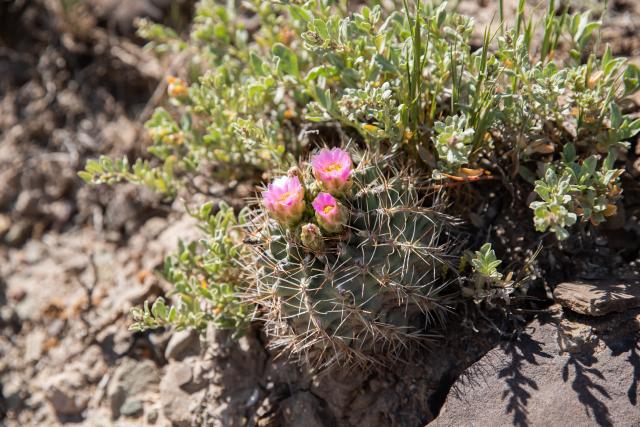
The BLM and its partners’ collective efforts led to Sclerocactus glaucus’ delisting, but that does not mean monitoring or planning land management with these cactus populations in mind is over.
“It was really exciting for me how everybody came together to make this a reality,” Dawson said. “Our work with our partners has been used for the greater good, but we’re going to be watching it for a minimum of 10 years after delisting because it’s going to remain a sensitive species. We are going to continually go out every year and collect data to look at those thresholds. My biggest hope is we stay the course in ensuring it won’t be listed again.”
Brigette Waltermire
